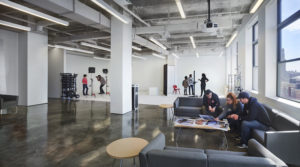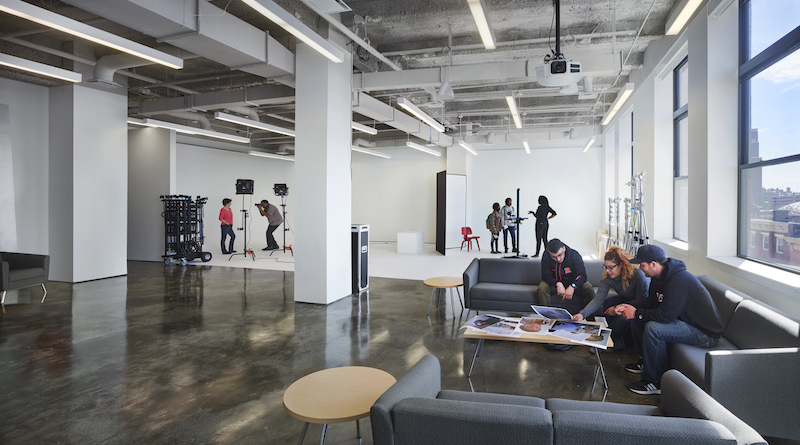Rutgers University Opens New Express Newark
NEWARK, N.J. — Earlier this year, Rutgers University opened the new Express Newark, located on the second through fourth floors of the previously vacant, 116-year-old Hahne & Co. building in Newark. The collaborative space is designed to connect the university with design professionals and the creative community through exhibits, workshops and production studios.
“The project establishes Rutgers culturally as an anchor tenant in the 500,000-square-foot reincarnation of Hahne & Co., host and home to the arts in Newark,” said Jason Chmura, AIA, LEED AP BD+C, associate for Princeton, N.J.-based KSS Architects, the architect on the project. “The environment seeks to cultivate local artistic expression that resonates globally by facilitating public scholarship and community engagement, opening a new chapter in the diverse city’s cultural history.”

The new 50,000-square-foot Express Newark serves as an anchor in the historic building’s development, helping to enhance the city’s Arts Triangle that is currently bringing creativity and vibrancy back to the urban core. Express Newark includes a maker space, print shop, photo studio, two galleries, production studio, digital media and 3D printing, classrooms and editing labs, conference rooms and offices. Architectural partitions snake through the rigid existing column grid to make the space inviting and exciting for the community, according to Jordan Mrazik, RA, project architect for KSS Architects. In fact, community members can join in on weekly Art Break sessions that range from origami 101 to lectures on jazz music.
“Express Newark provides state-of-the-art interdisciplinary public learning spaces where artists, community residents and community partners will create visual, spoken word and electronic arts; foster democratic dialogue; and effect positive transformation,” Chmura said. “All the collaborations, experimentation and innovation are done in partnership with Rutgers faculty, staff and students.”
The lobby circulates around past amphitheater stairs to public forums, classes and photo shoots, while the monumental staircase also opens up the upper floors. The wooden amphitheater seating adds to the space as well, bringing an iconic lobby element that continues to enhance engagement and community. Additional combinations of flexible and fixed seating throughout the space give users the option to lounge, work or wait. Large-scale graphics, signage and displays further draw users into the many program elements, according to Chmura.
Another major space is the second-floor Newark Print Shop, which hosts an open Print Club every Wednesday for aspiring printmakers. Key to the print shop as a community tenant was visibility into and through from the main lobby, with space on walls for rotating art exhibitions, according to Mrazik. Its prime location near the entrance or building atrium puts the print shop’s activities on display for passersby, added Chmura.
“The team also planned for murals on the wall, celebrating work by local artists that represent the spirit of the print shop,” Chmura said.
One challenge the design team faced included designing within the historic building’s rigid existing structure. The team had to get especially creative when designing enough room for the heavy-duty letterpress machines and behind-the-scenes storage space necessary for the print shop.
The project was unique in that it was a multifaceted partnership between institution, developer, faculty and staff, architects, community residents, businesses and artists. “This project was the first time so many users from various places were coming together,” Chmura added. “The design process had to unify the voice all under the traditional project stakeholders and institutional process.”

